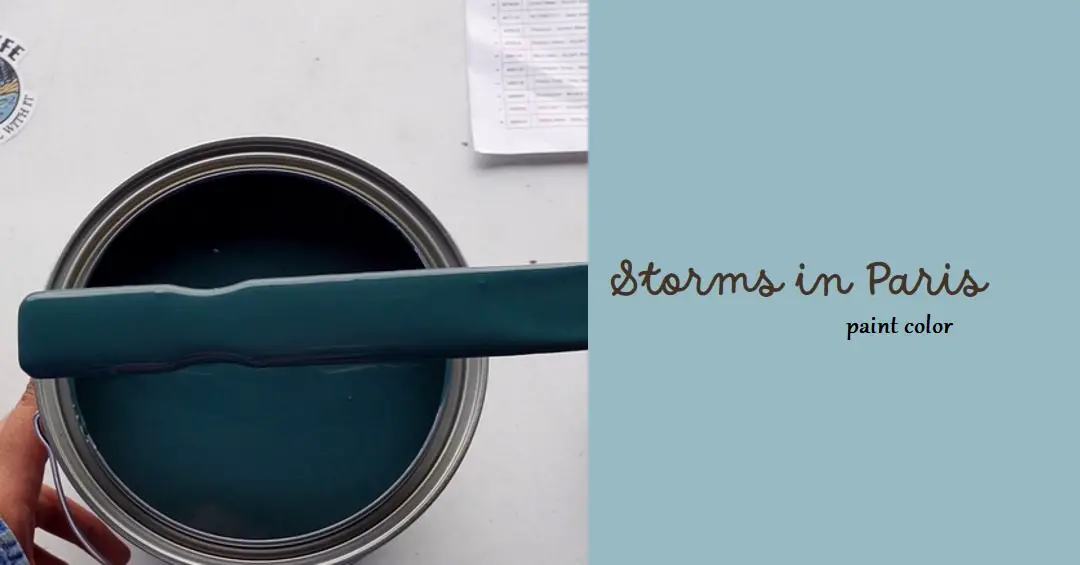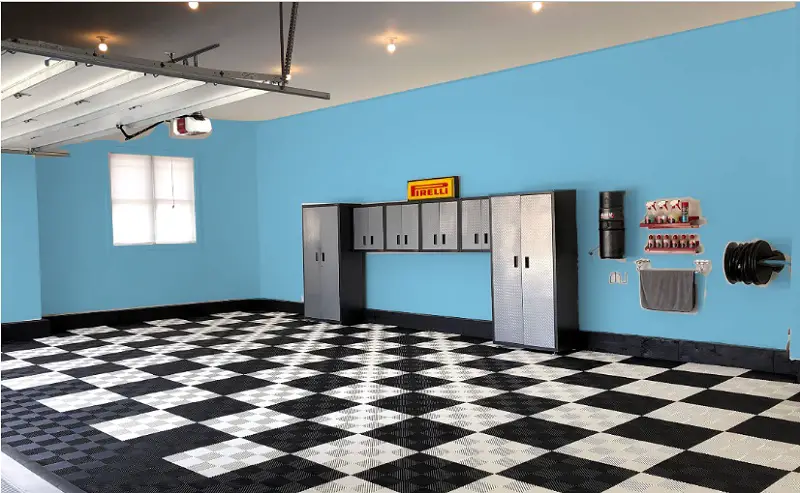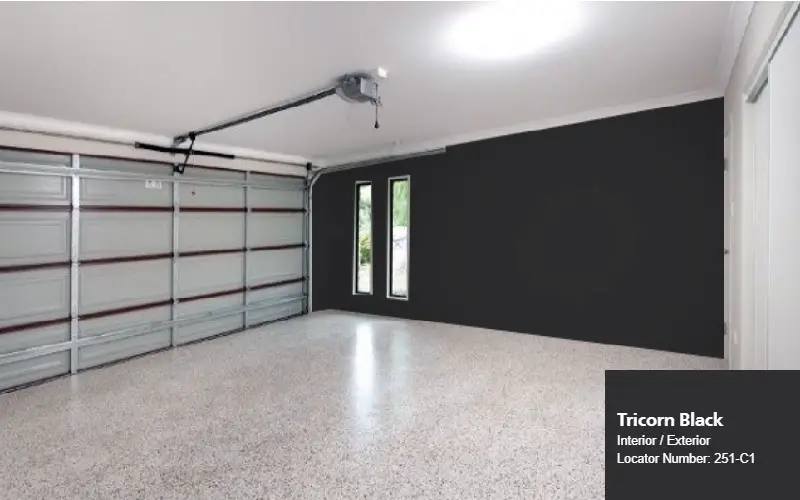Can You Use Exterior Paint Inside a Garage?
Can You Use Exterior Paint Inside a Garage Did you know that the choice of paint can significantly impact your […]
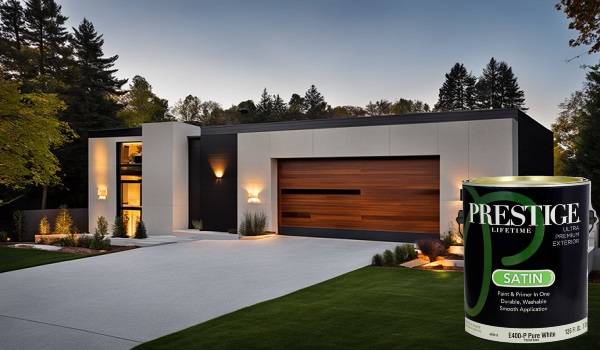
Can You Use Exterior Paint Inside a Garage
Did you know that the choice of paint can significantly impact your indoor air quality and the overall safety of your garage?
Many homeowners ponder whether they can use exterior paint inside their garages.
In this article, we will explore the reasons why this isn’t always advisable, exceptions to the rule, and essential safety precautions. Let’s delve into the world of exterior paint and garage aesthetics.
Exterior paint is designed for, as the name suggests, outdoor use. Its primary purpose is to protect surfaces from the elements, including rain, UV rays, and temperature fluctuations.
In contrast, interior paint is formulated for use inside homes, with a focus on aesthetics, durability, and indoor air quality.
It is generally not recommended to use exterior paint inside a garage, but there are some exceptions.

Section 1: Why Exterior Paint Is Not Ideal for Indoor Use
VOCs (Volatile Organic Compounds)
One significant drawback of exterior paint for indoor use is its high VOC content. VOCs are chemicals that can be harmful when released into the air.
When you apply exterior paint inside a garage, the concentration of VOCs can be significantly higher, posing health risks. These compounds can cause respiratory issues, headaches, and even contribute to long-term health problems.
Fumes
The pungent odor associated with exterior paint can be overpowering. This odor can linger for an extended period, making the garage an uncomfortable space to work or spend time in.
The fumes can be particularly problematic if you have a garage attached to your home, as they may permeate into your living space.
Drying Time
Exterior paint takes considerably longer to dry than interior paint. This extended drying time can be inconvenient, as it may limit your ability to use the garage for several days or even weeks, depending on environmental conditions.
Durability
Exterior paint is formulated to withstand harsh weather conditions, making it less flexible than interior paint.
This inflexibility can lead to chipping and peeling when applied to surfaces that experience constant movement or wear, such as garage doors.
Section 2: Exceptions to the Rule
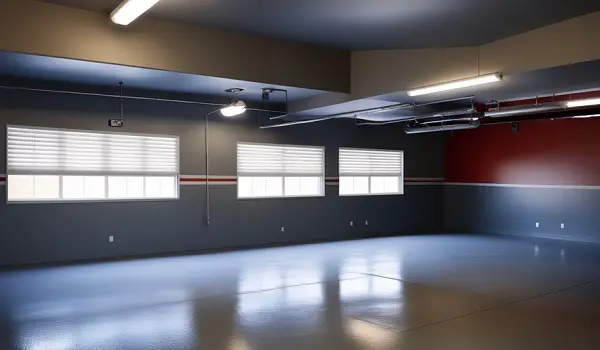
Well-Ventilated Garages
In some cases, if your garage is well-ventilated and not used for storing vehicles, you may be able to use exterior paint. Adequate ventilation can help dissipate the harmful VOCs and odors, reducing health risks.
Specific Surfaces
Exterior paint can be suitable for specific surfaces in your garage, such as the floor or walls behind a workbench. These areas may benefit from the extra durability and protection exterior paint offers.
Section 3: Tips for Using Exterior Paint Inside a Garage Safely
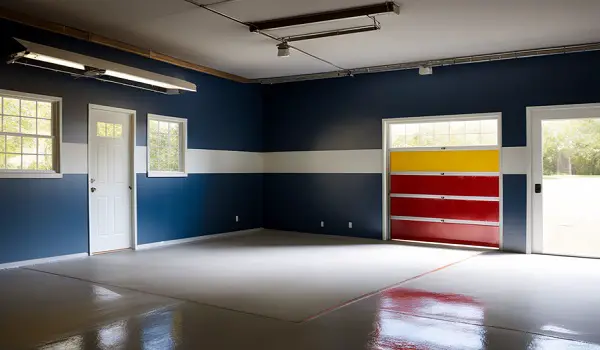
When considering the use of exterior paint inside your garage, safety should always be a top priority. To minimize health risks and ensure the best possible outcome, here are some detailed tips for safely using exterior paint in an indoor setting:
1. Comprehensive Ventilation
Proper ventilation is paramount when working with exterior paint indoors.
Before you start painting, take the time to prepare the space. Open all windows and doors to maximize airflow.
Consider using box fans or exhaust fans strategically placed to create cross-ventilation.
This not only helps in dissipating the strong odors but also aids in reducing the concentration of VOCs in the air.
Additionally, using a box fan near an open door or window can help push the fumes outside, further improving air quality inside the garage.
2. Select the Right Respirator Mask
Wearing a respirator mask is non-negotiable when working with exterior paint indoors.
Not just any mask will suffice; you’ll need a high-quality respirator specifically designed for use with volatile organic compounds (VOCs).
These masks are equipped with filters that can capture paint fumes and protect your lungs from harmful chemical exposure.
Ensure that the mask fits snugly on your face and is rated for use with paint fumes. Remember, your health is worth the investment in a proper respirator mask.
3. Timing is Crucial
Patience is key when using exterior paint inside your garage. After applying the paint, allow it to dry completely before using the space.
This might mean waiting longer than you would with interior paint, as exterior paint typically has a longer drying time.
Follow the manufacturer’s recommendations regarding drying times, and ensure the garage remains well-ventilated throughout this period.
Rushing the drying process can lead to higher fume levels and compromised air quality.
4. Plan Your Work Strategically
To minimize your exposure to fumes, plan your painting project strategically. If possible, divide the work into smaller sections or phases, allowing you to focus on one area at a time.
This approach not only makes it more manageable but also reduces the duration of time you need to spend in the garage while the paint is still emitting fumes.
5. Dispose of Materials Safely
Once you’ve completed your painting project, dispose of paint cans, brushes, and other materials properly.
Do not leave partially filled paint cans or used brushes inside the garage, as they can continue to emit fumes. Seal paint cans tightly and consider storing them in a well-ventilated area outside the garage.
6. Protect Your Skin and Eyes
In addition to respiratory protection, it’s essential to safeguard your skin and eyes. Wear long sleeves, gloves, and safety goggles to prevent any direct contact with the paint.
While exterior paint isn’t as caustic as some industrial coatings, it’s still important to take precautions to avoid skin irritation or eye damage.
Conclusion
In conclusion, while it is generally not recommended to use exterior paint inside a garage due to the presence of VOCs, fumes, longer drying times, and lower durability, there are exceptions.
Well-ventilated garages and specific surfaces may be suitable candidates for exterior paint. However, always prioritize safety by ventilating the space and wearing a respirator mask if you decide to proceed.
Remember that safety should never be compromised in the pursuit of aesthetics. So, can you use exterior paint inside a garage? With the right precautions, you can, but proceed with care. Your health and well-being should always come first.


